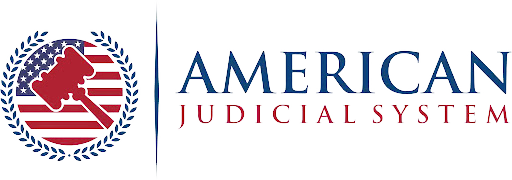In today’s competitive business landscape, building a diverse and inclusive workforce isn’t just a social responsibility but a strategic advantage. Companies with broader perspectives and experiences consistently outperform their peers in innovation, problem-solving, and overall success.
This article discusses in detail five key strategies for ensuring that your company includes people from various demographics. From implementing diverse sourcing strategies to training unconscious biases, keep reading to learn more.
Diverse Talent Sourcing
Expanding the talent pool and employing different sourcing strategies is one of the main ways to ensure your workplace is inclusive of people from all backgrounds. To start with, determine the demographic groups (ethnicity, gender, age, LGBTQ+, veterans) your organization aims to attract and hire. Then, expand beyond traditional recruitment methods by utilizing multiple sourcing channels.
You can use specialized job boards that cater to diverse candidates, such as Women in Technology, DiversityJobs.com, or Prospanica for Hispanic and Latino professionals. Consider attending or sponsoring events specifically designed to connect employers with talent of all backgrounds, such as career fairs hosted by minority professional associations or diversity recruitment events at universities. Collaborations with organizations, community groups, and educational institutions also help build relationships and give you access to diverse candidate pipelines. Employee referral programs are another effective strategy, so encourage employees to refer candidates from their networks, offering incentives to promote participation.
You can also consider broadening recruitment efforts to attract people from other countries. It can be a powerful strategy to access a wider pool of skilled professionals with different backgrounds and perspectives, help you enhance your company’s global presence and reputation, and identify new markets and customers.
Identify regions with a high concentration of skilled workers in your industry and offer incentives to encourage them to relocate to work with your organization. You can utilize video conferencing and other online tools, such as Zoom or Skype, for interviews and onboarding. In case you have any doubts regarding a particular employee, you can look into them with private investigators from companies like Diligence International Group. Remote work should also be considered to make it easy for skilled professionals to work with you from anywhere in the world.
Unconscious Bias Training
While many people don’t realize it, they suffer from unconscious biases, which can significantly impact hiring decisions. For example, a hiring manager might unconsciously favor a candidate with similar interests or backgrounds, overlooking the more qualified applicant.
Giving bias training helps in many ways. By highlighting the existence and impact of unconscious biases, you can help people understand how they operate and learn practical tools and techniques to recognize and challenge them in hiring decisions. Additionally, exploring different perspectives and experiences can foster empathy and understanding for diverse groups, and candidates who feel that the hiring process is fair and inclusive are more likely to accept job offers and become engaged employees. Some effective training techniques you can use are:
- Interactive workshops: Conduct interactive sessions where participants engage in discussions, case studies, and role-playing exercises to explore the different types of biases and their impact.
- Implicit association tests (IAT): Use IATs as a tool to help participants recognize their unconscious biases by measuring associations between concepts (e.g., race, gender) and attributes (positive or negative).
- Guest speakers: Invite individuals from diverse backgrounds to share their experiences and perspectives.
- Real-life examples and scenarios: Present real-life examples and scenarios that illustrate how biases can influence decision-making in recruitment, promotion, and everyday interactions.
Inclusive Job Descriptions
Creating diverse job descriptions and advertisements is crucial for attracting a wide range of candidates and promoting inclusivity within the hiring process. Start with using inclusive language. Avoid gendered or culturally biased language that may deter certain groups from applying. Instead of using terms like “salesman” or “chairman,” opt for gender-neutral alternatives such as “salesperson” or “chairperson. Use inclusive pronouns (she/her, he/him, they/them) and terms that appeal to a broader audience. Focus on the skills, qualifications, and experiences necessary for the role and clearly outline them in the job description without including any unnecessary requirements that may limit the applicant pool.
Emphasize the company’s commitment to equal opportunity employment by including a statement in the job description reflecting these values, and also mention any specific diversity programs, employee resource groups (ERGs), or inclusive policies the company has in place.
You should also see that the job descriptions and advertisements are accessible to individuals with disabilities by using accessible formats and providing alternative options for application. In the end, thoroughly review it for any accidental language reflecting biases or stereotypes that may discourage your target demographics from applying without meaning to.
Measuring Progress and Improving
For continuous improvement, data-driven decision-making is important. Regularly measure your progress and make changes where necessary. Some key metrics to track are:
- Diversity of applicant pool: Track the demographic composition of applicants for open positions and measure the percentage received from diverse candidates compared to total applications.
- Interview and selection rates: Monitor the percentage of diverse candidates selected for interviews compared to non-diverse candidates. Measure their representation in the final selection and hiring decisions.
- Offer acceptance rates: Analyze the acceptance rates of job offers and see if there are differences. Investigate the possible reasons for any gaps.
- Time to fill positions: Track the average time it takes to fill positions for your target population compared to others, and find out if there are any delays or challenges specific to hiring diverse talent and address them accordingly.
- Retention rates: Measure the retention rates of diverse hires over time compared to others and identify any challenges or patterns that may affect these employees differently.
By tracking these metrics and regularly analyzing the data, you can identify strengths, areas for improvement, and gaps in your diversity and inclusion efforts.
Create an Inclusive Workplace Culture
An inclusive workplace culture is where everyone feels valued, respected, and empowered to contribute their best. It’s a place where diversity is celebrated, and everyone has equal opportunities to succeed. Creating a workplace like that is an ongoing journey requiring consistent effort, commitment, and a willingness to learn and grow. Leaders must demonstrate a genuine commitment to diversity and inclusion, set clear goals and expectations, hold everyone accountable, and ensure that diversity and inclusion are priorities at all levels of the organization.
Start with reviewing and updating HR policies to make sure they are inclusive and equitable, support work-life balance, accommodate diverse needs (parental leave, flexible work arrangements), and prevent discrimination and harassment. Additionally, encourage the formation of Employee Resource Groups (ERGs) that represent diverse identities and backgrounds within the organization and provide them with the resources and sponsorship needed for hosting events, discussions, and networking opportunities.
Creating employee channels for anonymous or open feedback on their experiences and suggestions for improving inclusivity is vital for fostering an environment where employees feel comfortable raising concerns. You can also incorporate qualitative feedback from employees through focus groups, exit interviews, or diversity committees to gain insights into their experiences and thoughts.
Consider celebrating cultural heritage months, religious holidays, and other diversity-related events to acknowledge and honor different identities and backgrounds and establish guidelines for respectful behavior and communication in in-person and remote work settings.
Endnote
Building a diverse and inclusive workforce is not just a moral imperative. It’s a strategic advantage. Implement the above-mentioned strategies to attract top talent from a wider pool, foster creativity and innovation, and create a workplace where everyone feels valued and can reach their full potential. Remember that a diverse and inclusive workplace culture is not built overnight. It takes consistent effort, open communication, and a willingness to learn and grow. By taking these steps, you can create a thriving organization that benefits from the talent, perspectives, and experiences of a truly diverse workforce.










